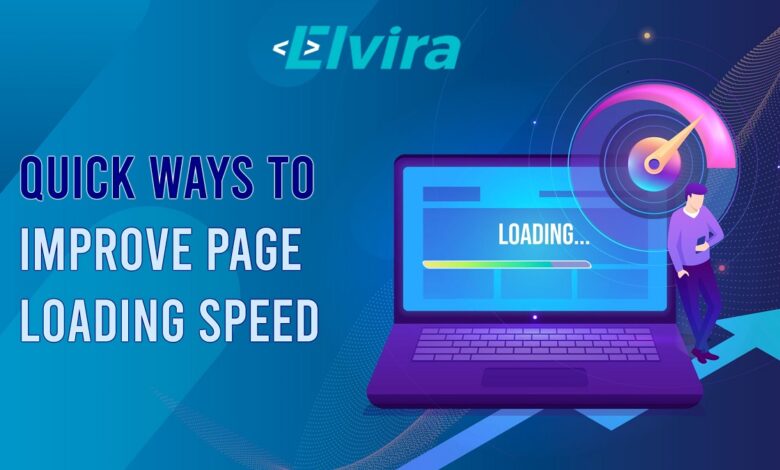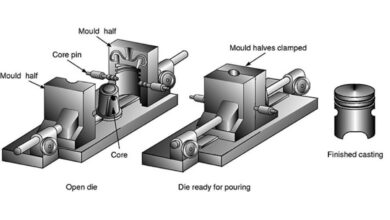How to Optimize Asseturi for Faster Website Loading Speed?

In the vibrant digital world, where websites are the new storefronts. Speed is the currency that can make or break your online presence. Imagine visiting a shop only to find its door unbearably slow to open; frustrating right? Now, transfer this scenario to your website. Slow loading times are akin to those sluggish shop doors. Here’s where ‘Asseturi’ optimization comes into play! This article titled How to Optimize asseturi for Faster Website Loading Speed will act as your comprehensive guide on this crucial topic. The race for faster website loading has never been more intense and challenging in the era of short attention spans and high-speed internet connections everywhere. Your potential customer or reader simply does not have the patience for a slow-loading website. Potentially costing you valuable business opportunities or engagement rates.
Understanding the Importance of Website Loading Speed:
In our digital age where instant gratification is the norm, a slow-loading website can lead to a frustrating user experience that drives potential customers away. The loading speed of your website has direct implications on user engagement, bounce rates, and ultimately, conversions. Indeed, studies indicate that websites taking longer than 3 seconds to load lose nearly half of their visitors.
However intuitive it may sound now, the true meaning of these statistics often is overlooked in the grand scheme of web development and design. By realizing the intrinsic connection between loading speed and online success. Investing in optimizing asseturi for faster website speeds takes center stage rather than being an afterthought. Every micro-second saved on your site’s load time potentially translates into greater retention and conversion rates. A power dynamic not to be taken lightly in today’s competitive online marketplace.
What are Asseturi?
In the bustling digital landscape, Asseturi is a term that you might not be acquainted with. But it’s one buzzing concept that offers incredible scope for website speed optimization. Sharing roots with web page assets’ management. Asseturi refers to the file paths or URLs where the resources from images and style sheets to JavaScript Files – on your webpage are located or stored.
Decoding its functionalities further takes us to an exhilarating excursion into how effectively managing these file paths can remarkably increase your website’s loading speed. Underneath this lies a secret tool for enhancing user experience and subsequently improving SEO performance! We’re talking about faster browsing experience reducing bouncing rates all by leveraging optimized asseturi. The optimistic upshots on overall site performance and functionality are truly something web developers shouldn’t overlook.
The Role of Asseturi in Web Performance:
Web pages today are no longer simple text blocks; they are bundles of various components, such as images, scripts, videos, and stylesheets. To run efficiently, all these individual elements must be correctly optimized and that’s where asseturi can play a crucial role in enhancing web performance. By serving an effective management system for these assets or files on your website. Asseturi significantly aids in controlling the complexity thereby improving load times and subsequently providing a seamless user experience.
Understanding how to optimally utilize asseturi can change the game for your websites’ loading speeds. Imagine the process to be akin to ushering visitors in a packed museum; it’s not enough to just have them enter. You need strategic planning to steer crowds smoothly through exhibits just like managing data flow effectively on your site! Enabling this strategy ensures better resource distribution, resulting in faster-loading pages that keep site visitors engaged rather than frustrated with slow response rates.
Techniques to Optimize Asseturi:
Asseturi optimization is a key factor in improving website loading speed and enhancing user experience. Let’s delve into some techniques that are easy to implement, yet yield significant results. Minification and compression of asseturi files can result in a remarkable reduction in load times; by eliminating lines, new spaces, and unnecessary data from your code, you dramatically reduce the size of the file without compromising its functionality.
Additionally, leveraging browser caching for storing asseturis can significantly improve site speed on repeat visits. Browser caching means storing web page resource files (including HTML, CSS & JavaScript) on a local computer when a user visits your webpage. So when they revisit or browse through other pages within your site only new or changed content needs to be downloaded! Not only does this amplify the ‘speed’ perception it also reduces server load allowing for better overall performance.
The Benefit of Browser Caching for Asseturi:
An area often overlooked in the quest for faster loading speeds is the crucial role of browser caching. This technique can be a game changer when it comes to optimizing asseturi. With browser caching, frequently accessed static files like CSS, JavaScript, and images are temporarily stored in the user’s local hard drive. On subsequent visits, these files are retrieved from this cache rather than re-downloading from the server. Greatly reducing page loading times and creating a smoother browsing experience.
Using browser caching has several benefits, including potential cost savings in addition to speed improvements. It greatly reduces the amount of bandwidth used by preventing unnecessary data downloads. Furthermore, it improves overall efficiency and extends server longevity by putting less burden on your server from fewer HTTP requests. Now that you are aware of this little-known aspect of optimization, it is imperative that you incorporate browser caching into your website performance plan in order to achieve lightning-fast asset load times.
Conclusion:
To sum up, asseturi optimization is a game-changer for getting a quicker website. It not only provides a better user experience but also raises the performance and SERP ranking of your website. Recall that developers are moving away from the fallacy that “bigger is better” and toward a leaner, optimization-focused strategy. Stay up to date with the latest developments in site optimization and prioritize effectiveness above size. Use your resources wisely; doing so doesn’t have to sacrifice functionality or quality. Embrace the possibility of blazingly quick loading times with optimized asseturi. Making every second matter in terms of improving the appeal and user experience of your website.




